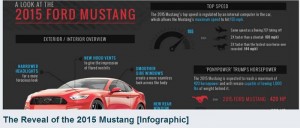I’ve been thinking a lot about chocolate recently…
Not much new there, obviously, chocolate featuring as one of the major food groups in our house. But in particular, I’ve been thinking about Cadbury.
 The Cadbury corporate site has long been one that I would visit regularly when benchmarking… “need an example of X done well? Nip over to the Cadbury site to see how they deal with X”. Their graduate site, for instance, did a lot of innovative things with videos and blogs before others were very active in this area.
The Cadbury corporate site has long been one that I would visit regularly when benchmarking… “need an example of X done well? Nip over to the Cadbury site to see how they deal with X”. Their graduate site, for instance, did a lot of innovative things with videos and blogs before others were very active in this area.
Things have changed a bit; their redesign slimmed the site down a lot, and other major corporate sites have worked hard to add innovative and useful functionality over the last couple of years.
However, Cadbury have continued their innovative work – but off the corporate site. The Cadbury approach seems to be to maximise the brand benefits they can get from their customer-facing social media outposts, while retaining the static and more corporate information on the corporate site.
There are hundreds of thousands of fans of Cadbury fans on Facebook. These are mostly brand pages (Dairy Milk: two pages with over 400,000 fans; Creme Eggs: two pages, with over 500,000 fans; Mini Eggs: two pages with over 300,000 fans … and that’s just on the first page of results). But there is also a corporate page with over 248,000 fans, and even a page for their recent Eyebrows advertisement campaign with nearly 225,000 fans. That is more than a glass and a half of customer love…
Cadbury is clearly doing something very right here; Facebook works well for them, and they are making the most of their advertising successes, and welcoming the mashups and spoofs that their loyal customers create. (You’ll no doubt remember the Mars/Snickers episode from a few months ago).
But it isn’t just Facebook: there are many Cadbury inspired videos on YouTube, and there’s at least one Cadbury channel. There also seem to be several Cadbury-owned Twitter accounts (such as @ButtonsFOTF, @haveyouearnedit, @Cadbury_Gorilla and @GoingFairTrade).
And Cadbury’s new Fairtrade blog links out to Flickr, YouTube and Twitter.
But the main corporate site doesn’t make a point of linking to the social media outposts – or only to the FairTrade blog, and to a CEO video on YouTube. So why have Cadbury chosen not to link out from the corporate site to these waves of customer love that come their way on Facebook and Twitter?
I’ve one thought, and one question…
The thought is about the authentication of social media outposts. I found the many Cadbury social media outposts by searching, and by making an educated guess as to whether they were corporate-owned or customer-owned. Here’s what I look for:
- using the company brand (logo and colours) on all the social media outposts
- linking from the main corporate site to the social media outposts
- linking back from the social media outposts to the corporate site, if possible
- identifying someone in the company who is responsible for that social media outpost
- providing content that supports the aims of the company
- using any of the verification methods that some outposts (e.g. Twitter) are setting up for corporates.
If a company doesn’t authenticate its social media outposts, then they run the risk of being brand-jacked, with all the knock-on brand and reputation risks that this creates.
This doesn’t need to be intrusive. Kodak do this well, creating links out to their outposts from one dedicated page, but it could be done by a related links section in the sidebar.
The Cadbury outposts I’ve mentioned seem to be genuine, in that they meet at least 3 of the 6 checks I list above, but they aren’t authenticated by the corporate site. Given Cadbury’s skill at managing its corporate web estate, this must be deliberate. Perhaps because they think it unnecessary, or because of the risk of losing control of the message, or even that it just detracts from the formality of the corporate site?
And here’s the question: what do you think of the strategy of keeping the two elements of corporate web estate distinct in this way? Is the main Cadbury site missing out on the benefits of the innovative and entertaining work that is being done at the outposts, or is it better to keep the traditional static corporate material well-structured, easy to find and easy to use?
Are Cadbury once again at the forefront of a new trend, and redistributing the workload across the whole corporate web estate: their corporate site and their social media outposts?
Lucy is Editor at Corporate Eye



Lucy – I agree with you because I think the corporate Web site is dying a slow death, in its current form of static and PR canned messages. I think companies should be integrating their outpost sites with their corporate Web sites. And you’re right, they can do it without being intrusive, like Kodak.
I love the idea that companies are creating home pages full of engagement and content that is ever-changing in real-time. I love that companies are allowing their employees to blog and become brand stewards. I love that a lot of private company CEOs are connecting with their customers in new and interesting ways.
We heart chocolate and Cadbury (see http://bit.ly/G6LDj). Seems like they just need to tweak a few things to truly be on the forefront of a new trend.
Gini – I agree with you about the energy that truly engaging content brings to a site, but I’m not sure I’d go as far as saying that the corporate website is dying. Evolving, perhaps. (And, like all evolutionary changes, it takes time, and there’ll be multiple approaches and a number of dead-ends). I don’t agree with the Mashable post of a while back: I don’t think that the corporate site is irrelevant. Like you, though, I do think it may look different in the future.
The corporate site has a lot of stakeholders: shareholders, potential investors, journalists, job-seekers, employees, analysts – financial and sustainability, suppliers, partners, customers… There needs to be somewhere that at least the core facts about the company can be found by all these people, for convenience as well as for legal reasons. (If you’re reading this comment but haven’t visited Gini’s post yet, then go now, and don’t forget to read the comments – there’s a fascinating discussion going on there about all this).
I think it’s important that we remember that some – if not most – of the visitors to a corporate website aren’t customers. Or, if they are, that isn’t necessarily their main reason for visiting. Of course, for some companies, all visitors are potential customers, but most visitors to a corporate website are considering interacting with the company in a way that isn’t buying one of their products/services: they want to find a job, find out how their shares are doing, maybe download the annual report, submit a proposal for collaboration, find a map to headquarters, find out how to submit a question for the AGM, write up a case study for college, apply for a charity grant, see the company’s reaction to a press story, and so on.
How that interaction is managed may change – and the fact that it is a potential interaction, not a one-way broadcast is vital – but the corporate brand will still need to be centred somewhere even if that centre is little more than a repository of links out – and where better than the corporate site? I happen to think that the corporate centre should be more than a repository, a library or a train station to another destination, but that’s a topic for another post, perhaps…
Thanks for commenting – you’ve triggered a number of thoughts. (I hadn’t realised Cadbury were one of your clients when I read your post – a double connection!).